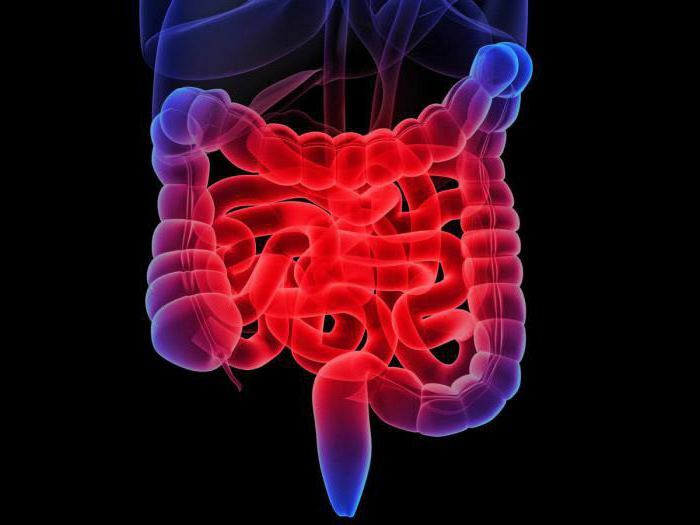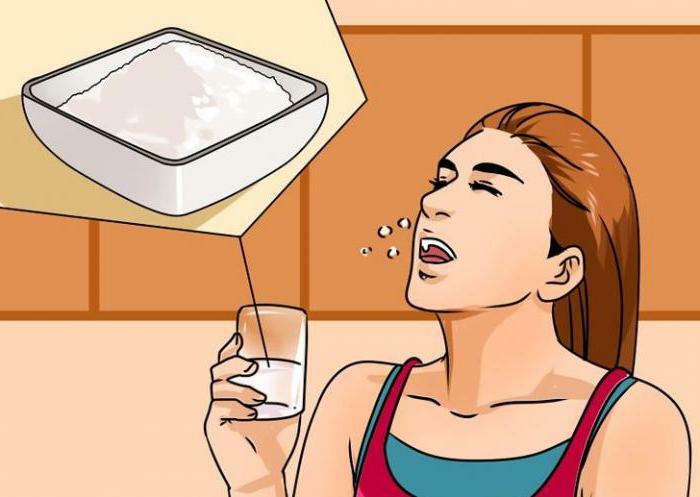White plaque on the tongue( at the root): causes
Many doctors know that the language can be learned about the features of the functioning of the body. It is a kind of indicator. In healthy people, there is no plaque on the tongue. At the root there are no formations. Their tongue is pink in color, with a soft surface. Nothing hinders his movements.
Variants of the
 standard There are times when people notice a plaque on the tongue( at the root) and try to look for a problem. But this does not always indicate a serious illness. Sometimes on the surface of this organ can appear a thin whitish layer through which the translucent tongue itself. Such a touch should not become an excuse for emotions.
standard There are times when people notice a plaque on the tongue( at the root) and try to look for a problem. But this does not always indicate a serious illness. Sometimes on the surface of this organ can appear a thin whitish layer through which the translucent tongue itself. Such a touch should not become an excuse for emotions.
But in parallel it is necessary to pay attention to:
- odor from the mouth;
- the time of appearance of white formations and their location.
In the absence of extraneous unpleasant odors can not be particularly worried. Also, do not panic if the plaque is visible only in the morning hours, and in the afternoon it decreases or disappears altogether. Pay attention to exactly where it is. If the plaque on the tongue at the root, and at the end of it is almost not, then this may be due to the nature of the food.
Sometimes it appears due to salivation or blood circulation disorders. Do not forget about oral hygiene. The cause of its occurrence can be candidiasis, periodontitis, stomatitis, gingivitis.
A cause for concern
To start experiencing and checking your health is necessary if you notice a white raid on the root of a language that does not vanish. The problems will be indicated by the attachment of an unpleasant odor. If the thickness and density of the plaque increase, its color changes to a darker one, then one should consult a specialist.
For example, a dense white layer will indicate a problem with the digestive system, perhaps such a person has chronic constipation. But if, at his appearance, fever, weakness, discharge from the nose appeared, then this is a sign of an infectious disease.
Covered with a white layer of the lateral parts of the base of this organ in case of problems with the kidneys. If you notice the plaque and feel bitterness in your mouth, then it is worth checking the gallbladder and liver. In this case, it can be yellow or even greenish.
The reason for concern is the changing color. For example, with ulcers or gastritis, the tongue is not visible because of the gray cover. But alcoholism is evidenced by a brownish coating. But this shade is also found in heavy smokers.
Causes of problems
 Specialists, with the help of a language examination, can develop a plan for further examination of the patient. After all, a doctor can suspect by his appearance that a person:
Specialists, with the help of a language examination, can develop a plan for further examination of the patient. After all, a doctor can suspect by his appearance that a person:
- problems with the gastrointestinal tract( dysbacteriosis, helminthic invasions, inflammatory processes, ulcerative lesions);
- kidney problems;
- diseases of the gallbladder and liver;
- dehydration or the presence of edema;
- infectious diseases.
If the root of the tongue is covered with plaque, then this may indicate inflammatory bowel disease, for example, enterocolitis. But we must look at other signs. If the plaque is not uniform, but resembles white lumps( as in cottage cheese), then it can be candidiasis.
In cases where not only the root is covered, but the entire tongue, one can speak of malfunctions in the functioning of the immune system. In humans, the problem with the work of the intestine can also be accompanied by anemia.
Possible variants of
raids Some people may notice that the tongue is covered with something yellow. This color of the plaque is the second most common. If the layer is thin and easily removable, then this indicates that the body is overloaded with slag and toxins. We need to think about changing the diet.
And here a dark yellow shade and dense structure speak about illnesses of a stomach. In this case, a person from the mouth can have an unpleasant smell. Only the gastroenterologist has to solve this problem. But if you drink an antibiotic and notice the yellow coating on the root of the tongue, then do not worry. It's just that your liver reacts to these drugs. After the treatment is completed, the situation is normalized.
Also a yellowish shade of the tongue may appear for colds, pharyngitis, angina. The abuse of strong tea and coffee often leads to its appearance. But usually it passes quickly.
Diagnosis of digestive diseases
 If you want to know how your digestive system works, pay attention to the root of the tongue. It is a projection of the intestine. But, having noticed in itself a raid on the tongue( on the root), it is not necessary to immediately diagnose. It is better to consult a therapist or immediately to a gastroenterologist. They will assign the necessary studies and determine if there are any problems.
If you want to know how your digestive system works, pay attention to the root of the tongue. It is a projection of the intestine. But, having noticed in itself a raid on the tongue( on the root), it is not necessary to immediately diagnose. It is better to consult a therapist or immediately to a gastroenterologist. They will assign the necessary studies and determine if there are any problems.
It is also necessary to visit a doctor because it can be a signal of HIV infection. This virus affects all organs, including the digestive system.
In patients with acute gastritis, the tongue is usually edematous. It is covered with a thick gray layer of plaque( sometimes it can be slimy), only its side edges and the tip remain free. In this case, as a rule, there is an unpleasant smell, a bitter or sour taste.
Chronic gastritis manifests a little differently. With it, there may be a white coating on the root of the tongue and in its center. Often it acquires a grayish shade. A similar picture can also occur with a stomach ulcer. If the covering layer is dense, then the taste may be dulled in the patient.
The feeling of dryness of the tongue, its swollen condition and smoothness of the papillae testifies to the defeat of the intestine and its functioning. But in the state of remission of diseases this organ is cleared. The same happens during treatment.
Signs of enterocolitis
 When examining the surface of a tongue, the therapist pays attention to the layer covering it. He can assume that the patient has problems with the intestines if he spots the plaque on the root of the tongue. Photos do not necessarily. Everyone can see it with the help of a mirror.
When examining the surface of a tongue, the therapist pays attention to the layer covering it. He can assume that the patient has problems with the intestines if he spots the plaque on the root of the tongue. Photos do not necessarily. Everyone can see it with the help of a mirror.
Simultaneous lesion of the large and small intestine is called enterocolitis. This disease leads to atrophic changes in the mucous membranes, because of this the intestine ceases to function normally.
Specialists identify an acute and chronic form of the disease. In the first case, only the mucous membranes of the intestine are affected. Often this disease occurs in combination with acute gastritis. Its chronic form arises from insufficiently qualitative treatment. In this case, not only the mucous membranes are affected, but also deeply located tissues. Disease is characterized by the fact that periods of exacerbations alternate with remissions.
But a raid on the root of the tongue is not the only sign of enterocolitis. The acute form of the disease will be further evidenced by such symptoms:
- abdominal pain, rumbling, bloating;
- nausea or vomiting;
- diarrhea;
- weight loss.
With chronic enterocolitis, there are other signs. They are usually quite weak. The disease is characterized by alternating constipation and diarrhea, a feeling of bloating, flatulence and pain.
If the cause of the disease is an infectious disease, it will be accompanied by weakness, muscle and headache, fever.
In cases where inflammation centers around the large intestine, the patient complains of constipation and diarrhea, which occur at the same frequency. But complaints of frequent disorders of the stool, a bursting feeling after eating, discomfort in the peripodal region occurs in those who have a small intestine.
Causes of intestinal problems
 If the condition worsens, a white coating appears on the root of the tongue. The causes of enterocolitis are manifold. To inflammation of the thick and small intestine can lead:
If the condition worsens, a white coating appears on the root of the tongue. The causes of enterocolitis are manifold. To inflammation of the thick and small intestine can lead:
- infectious diseases;
- abuse of spicy food;
- alcoholic or drug intoxication;
- helminthic infestations;
- radiation damage;
- food allergy;
- prolonged treatment with antibiotics.
Depending on what led to the problems, several types of enterocolitis are distinguished:
- bacterial: occurs with the development of such diseases as shogellosis, dysentery, salmonellosis;
- toxic: provoked by poisoning with poisons, drugs, chemicals;
- parasitic: appears against the background of colonization of the intestine with Trichomonas, amoebae, helminths;
- mechanical: it develops due to prolonged and frequent constipation;
- alimentary: is a reaction of the body to malnutrition;
- secondary: appears as a complication after the transferred gastrointestinal diseases.
Having understood what caused the disease and led to the fact that the root of the tongue is covered with white coating, you can already prescribe the treatment.
Toddler problems
Sometimes, parents notice that the child's language has an unhealthy appearance. It can be covered with a white or yellow layer, and sometimes it becomes crimson. You can not leave it alone.
Plaque on the root of the tongue in a child may indicate a malfunction in the intestine. But if it has a white or grayish layer all over its surface, then it is worth checking whether the baby has a dysbiosis. But the yellowish shade may indicate overheating.
 A dense white coating on the tongue occurs with most infectious diseases. It can talk about ARI, flu, sore throat, scarlet fever, tonsillitis, pharyngitis and other diseases. As a rule, its appearance coincides with the rise in temperature.
A dense white coating on the tongue occurs with most infectious diseases. It can talk about ARI, flu, sore throat, scarlet fever, tonsillitis, pharyngitis and other diseases. As a rule, its appearance coincides with the rise in temperature.
But in children the plaque can arise and because of thrush. This is one of the main reasons that the baby becomes a white tongue. But with this fungal disease affects not only the root. White becomes almost the entire language, lesions can be on the cheeks, the inside of the lips and the palate.
Language Purification: Does it Make Sense?
Many advise using soda to clean white coating on the root of the tongue of the child. But this does not solve the main problem. If the plaque covers only the base of the tongue, then it is necessary to consult a pediatrician. He can refer you to a gastroenterologist. Only after a complete examination can you say exactly what led to the appearance of a raid.
If you eliminate the underlying disease, then the plaque will disappear on the root of the tongue. The reasons for its formation must be correctly defined. Also on the intensity of the plaque, you can determine how effective the prescribed therapy is.
You, of course, can remove the layer from the language, but it will appear again, because the cause of its appearance will not be eliminated. This can be done with a cotton swab or gauze moistened in a soda solution.
If you notice the raid only in the morning, you can safely remove it. As a rule, it does not indicate any problems. To get rid of the white layer, you can use a special brush to clean the tongue. Many manufacturers of toothbrushes make it on the reverse side. Also, you can get rid of the white layer using a regular teaspoon or a special scraper.
It's important to do it right. Clean the tongue with movements from its base to the end. You can use toothpaste or powder for these purposes. So you can not only remove the visible cover, but also remove a huge number of microbes. Many people advise regularly to clean the tongue, because it helps to maintain the right microflora in the mouth.
By the way, care of the oral cavity is also necessary in order to maintain the teeth and gums in a normal state. This will reduce the problems with them to a minimum.
Tactics of treatment
To determine what to do if there are pimples and white coating on the root of the tongue, it is possible after consultation with the therapist. The doctor may prescribe a test or refer you to a specialist for consultation.
 If the plaque is concentrated only in the basal part, then it is better to go to the gastroenterologist. About problems with the kidneys, the white layer from the side parts at the base of the tongue will testify. The projection of the stomach and pancreas is the central part of this organ. To suspect a heart problem is possible by changing the tip of the tongue. Problems with the spleen and liver will be indicated by spots on the sides of the central part. But the lesions from the side parts are closer to the tip of the tongue, can tell about the problems with the lungs. An uncontrolled plaque in these areas occurs in smokers.
If the plaque is concentrated only in the basal part, then it is better to go to the gastroenterologist. About problems with the kidneys, the white layer from the side parts at the base of the tongue will testify. The projection of the stomach and pancreas is the central part of this organ. To suspect a heart problem is possible by changing the tip of the tongue. Problems with the spleen and liver will be indicated by spots on the sides of the central part. But the lesions from the side parts are closer to the tip of the tongue, can tell about the problems with the lungs. An uncontrolled plaque in these areas occurs in smokers.
You can get rid of it, but only if you cure the problem that led to its formation. For example, to restore the work of the intestine it is important to adhere to a diet. The patient should have a strict regimen. With acute enterocolitis, as with enteritis or colitis, gastric lavage is prescribed. After this, the patient is assigned fasting days. At this time you can only drink water and loose tea. Over time, the intake of liquid food is permitted: it can be a rice broth or a thin porridge. Hard food is prohibited.
You can not ignore inflammatory bowel disease. First of all, it is necessary to determine the cause of their occurrence. Only after this, you can select the appropriate therapy scheme. If the inflammation started due to a bacterial infection, then antibiotics can not be avoided. Allergic enterocolitis can be eliminated only when a person stops using products that cause a reaction. Obligatory taking and antihistamines.
We can not ignore worm infestations. Parasites can not only damage the intestinal mucosa, but also cause a general weakening of the body. After antiparasitic treatment it is important to monitor the patient's condition. In some cases, the course must be repeated several times. Often the cause of diseases of the intestines become toxins. Inflammation begins with excessive use of alcohol or certain drugs.
Regardless of the reasons for the appearance of problems with the intestines, it is important to restore its work. But this is difficult to do without special drugs that are designed to normalize the intestinal microflora. Assignments can be made such as "Subalin", "Narine", "Symbiolakt", "Latsium", "Normobakt" and others. The doctor selects the most suitable means, assessing the general condition of the patient and taking into account the area of the intestine where inflammation occurs.
